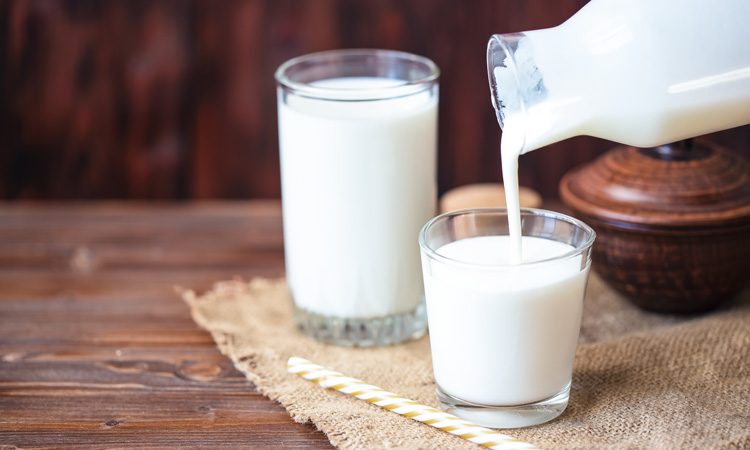Challenges in probiotic dairy-based beverages
- Like
- Digg
- Del
- Tumblr
- VKontakte
- Buffer
- Love This
- Odnoklassniki
- Meneame
- Blogger
- Amazon
- Yahoo Mail
- Gmail
- AOL
- Newsvine
- HackerNews
- Evernote
- MySpace
- Mail.ru
- Viadeo
- Line
- Comments
- Yummly
- SMS
- Viber
- Telegram
- Subscribe
- Skype
- Facebook Messenger
- Kakao
- LiveJournal
- Yammer
- Edgar
- Fintel
- Mix
- Instapaper
- Copy Link
Posted: 26 October 2019 | Dr Nazli Turkmen, Hasitha Priyashantha, Shishanthi Jayarathna | No comments yet
There has been a lot of hype surrounding the benefits of probotics. To distingish fact from fiction, Hasitha Priyashantha, Dr Nazli Turkmen and Shishanthi Jayarathna investigate recently published scientific studies that explore the challenges of probiotic, dairy-based drinks.


Probiotics are defined as living microorganisms that, when ingested in certain numbers, provide health benefits to the host.1 Scientists argue that dairy products, including various dairy-based beverages, are the most effective food matrix in which to deliver probiotic bacteria for the purpose of benefiting human health.
In this article, we investigate such health claims and the challenges in producing an optimal final product with probiotic health effects.
Health claims
The probiotics market has skyrocketed; partly due to progress in research and new product development, and partly due to consumer-led demand for healthier products. Probiotic drinks have gained particular popularity, as they are believed to garner benefits rather than merely act as a nutritional supplement. The benefits associated include: immune system stimulation, lowering of blood ammonia, reducing serum cholesterol, strengthening mucosal barriers, alleviating lactose intolerance and sythesis of B vitamins.
Some of the findings regarding associated benefits are well-documented and many have shown promising potential based on animal studies.
Various health-promoting benefits are often observable, but they are strain dependent. For this reason, a single strain is unable to provide all-inclusive benefits; instead, diverse health-promoting effects are closely associated with the composition and diversity of the bacterial strains present in a particular food matrix. This makes the story of probiotics both interesting and complex.
Bacteria
Most probiotic products on the market contain various mixtures of lactic acid bacterial strains from the genera Lactobacillus and Bifidobacterium.
Bacteria are one of the general inhabitants of humans, imparting both positive and negative health effects; although, generally, intestinal residential bacteria do not pose adverse health effects and often demonstrate positive influences on the host’s wellbeing.
Several in vitro studies, so-called test-tube experiments, along with animal studies have demonstrated the ability of probiotic strains to enhance the immune responses of the host.2 In fact, the natural immunity of healthy adults could be improved by dietary consumption of Bifidobacterium lactis.3
Heart benefits
Evidence suggests that the use of probiotics lowers the risk of cardio vascular diseases and coronary heart disease, particularly by reducing the serum cholesterol level. There are a couple of ways that probiotics are known to help lower cholesterol levels in humans: firstly, through bacterial enzymes deconjugating bile acids, which creates less soluble and less absorbable bile salts that can be readily loosened via faecal excretion; and, secondly, through the uptake of cholesterol by growing cells and incorporation into the cellular membrane.4
Gut benefits
Probiotic bacteria is also important in maintaining intestinal health because a strengthened intestinal barrier is essential for a healthy gut. Probiotics reduce the growth of pathogenic bacteria either by producing antimicrobial bacteriocins or by competing with the pathogens for the mucosal adherence sites.5,6
Lactose intolerance is due to a lack of lactase enzyme to digest lactose in dairy products, which leads to various complications such as bloating, nausea, abdominal cramping and diarrhoea. Consumption of fermented probiotic beverages has shown positive effects for individuals with lactose intolerance, where the fermentation helps to reduce the lactose concentration and increases active lactase enzyme concentration in the small intestine.7
Bioavailable vitamins
Malnutrition and imbalanced diets have led to vitamin deficiencies in both the young and old. However, it is now well known that certain lactic acid bacteria and probiotics are able to produce some water-soluble vitamins, especially the vitamins in the B category such as riboflavin (Vitamin B2), folate (vitamin B11) and cynobalamine (vitamin B12). The use of vitamin-producing probiotics in food is therefore a feasible approach to producing vitamin-rich food without artificial fortification.8


Challenges in producing probiotic dairy products
The organoleptic properties of the probiotic-enriched foods must be carefully designed in order to preserve the desirable characteristics of the product. Often, the addition of probiotic cultures has introduced several challenges in meeting the required physicochemical properties.9
Probiotic fermented foods are the most commonly consumed probiotic products among dairy and non-dairy products. Fermentation acts to preserve probiotic effects by retaining or optimising the activity of probiotic bacteria.
In addition to being an inexpensive process, fermentation also improves the nutritional and sensory properties of the product. Numerous technologies and different mixtures of varying ingredients can be easily used in the production of probiotic dairy-based beverages.10
Prebiotics are generally employed for the growth and viability of probiotic bacteria used in the production of probiotic dairy-based beverages. For this purpose, the most commonly used prebiotics are raffinose, oligofructose and inulin.11
The production of functional products, especially those containing probiotic bacteria, is a vigilant process that requires many factors to be controlled and considered; particularly the sensory properties, shelf life, and physical, chemical and microbiological stability of the final product, as those attributes are most likely to influence consumers’ acceptability.
Challenges in delivering probiotic effects
Several criteria must be met to deliver optimal probiotic effects but often these points are missed in manufacturing. A detailed and controlled process is required to maintain the quality and reproducibility of the process. New product development requires intricate evaluation of quality and safety, such as absence of allergens, which could likely stem from culture media ingredients.
In manufacturing, incorporating probiotics to the dose required at the end of shelf life is a factor that is often overlooked. However, incorporation of traditional probiotic lactic acid bacteria and bifidobacteria in fermented dairy products have posed challenges by shortening the shelf life. In some cases, the addition and growth of probiotic bacterial cultures compromises the sensory profile of the product.12 Therefore, the choice of starter cultures and packaging options are important in maintaining a shelf-stable product, while adhering to strict hygienic standards.
Appropriate fermentation and storage temperature, pH of the final product, type of packaging, extra processing such as post-heat treatments and homogenisation and interactions with other ingredients, are critical in delivering optimal probiotic health effects.13 Thus, extra diligence must be given to ensure a product’s organoleptic properties both at new product development and commercial production levels.
Conclusion
Functional probiotic dairy beverages provide additional benefits beyond basic nutritional supplementations and stand out as a special type of matrix to facilitate probiotic health benefits. But delivering an optimal final product with probotic effect is challenging. Intensive efforts have been made to redesign dairy-based beverages to ensure optimal sensory properties and probiotic effects. However, proper scientific validation of health claims remains a critical ongoing requirement for functional dairy beverages.
References
1. https://doi.org/10.1016/j.idairyj.2005.10.008 1181–1189.
2. https://doi.org/10.1017/s0007114500000210 3, 167–176.
3. Arunachalam K, Gill HS, Chandra RK. 2000. Enhancement of natural immune function by dietary consumption of Bifidobacterium lactis (HN019). Eur J Clin Nutr 54, 263–267
4. https://doi.org/10.1155/2012/902917
5. https://doi.org/10.1186/1471-2180-7-101101.
6. https://doi.org/10.1038/nrmicro1273 777–788.
7. https://doi.org/10.1111/j.1365-2672.2007.03579.x 104, 595–604.
8. https://doi.org/10.5772/63117
9. https://doi.org/10.1111/jtxs.12449
10. https://doi.org/10.1111/j.1541-4337.2010.00120.x 455–470
11. https://doi.org/10.1016/j.jff.2018.12.004 .62–75.
12. https://doi.org/10.3390/microorganisms7030083
13. https://doi.org/10.1111/jfpp.12551 2984–2990
About the authors


Hasitha Priyashantha
Hasitha Priyashantha is a PhD student in Food Science at SLU, Sweden. He is currently investigating the texture, microsturcture and flavour in Swedish long-ripened hard cheese in relation to raw milk composition and its properties.


Dr Nazil Turkmen
Dr Nazil Turkmen is a researcher at the Department of Dairy Technology, Faculty of Agriculture, Ankara University, Turkey. Her areas of expertise include milk of small ruminants, ice cream and fermented dairy products technology.


Shishanthis Tayarathna
Shishanthi Jayarathna is a PhD student at the Swedish University of Agricultural Sciences. She holds an MSc in food science and technology, and a BSc in animal science and fisheries.
Issue
Related topics
Beverages, Food Safety, Health & Nutrition, Research & development
Related organisations
Ankara University, Swedish University of Agricultural Sciences







